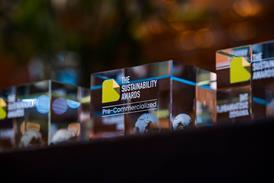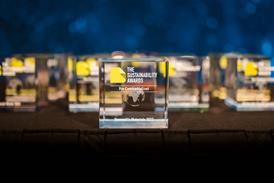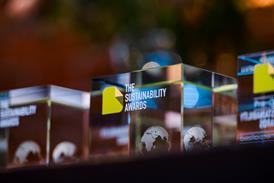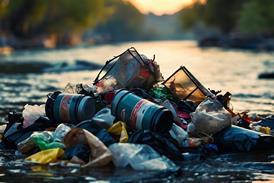
A biopolymer version of Smart Planet Technologies’ EarthCoating barrier coating has been released, combining a biobased PLA resin with a ‘specialized mineral blend’ to produce both compostable and recyclable paper cups.
Traditional polyethylene coatings have previously compromised the recyclability of barrier-coated paper packaging, contaminating paper recycling streams and condemning the waste to landfill. While PLA coatings are considered industrially compostable, they also pose challenges in the recycling process.
In response, EarthCoating-Bio features mineralized resin to improve a coated pack’s compatibility with conventional paper recycling systems. The mineral content is said to enable the coating to be removed in the same way as clay fillers, which are already used in paperboard and designed for removal during the recycling process.
Mineralizing the resin is thought to reduce the plastic content of a barrier coating by 35-51% compared to conventional, 100% plastic coatings; it also reduces the amount of PLA required to coat a pack, the company says, introducing ‘inexpensive’ materials and facilitating a more affordable solution.
Smart Planet Technologies goes on to assert that the coated packaging is qualified for recycling in premium recovered paper categories.
At the same time, the polymer itself is derived from renewable resources, meaning it is still considered industrially compostable. It reportedly meets industrial composting standards and provides a complementary end-of-life solution to recycling.
The whole EarthCoating range is designed to improve barrier and heat seal performance compared to 100% plastic coatings, and to serve as a drop-in solution – allowing packaging manufacturers to integrate it into their existing manufacturing process with no changes required.
“Regulations for sustainable packaging have been challenged with the concern whether to support recycling or composting of packaging,” said Chris Tilton, co-founder and chief technology officer at Smart Planet Technologies. “The commingling of packaging that may be compatible with one process can be incompatible with the other.
“With the introduction of EarthCoating-Bio, we are providing a solution that is compatible with both efforts, while reducing plastic content. This is a more sustainable PLA-based solution that 100% PLA coatings.”
Smart Planet Technologies previously utilized its EarthCoating technology to produce HyperBarrier, a recyclable nanocomposite coating hoped to drive a transition into paper-based flexible packaging. The coating is believed to unlock ten times the moisture barrier and twenty times the oxygen barrier performance of conventional polyethylene coatings.
In other news, UPM Specialty Papers and Eastman have applied a compostable biopolymer coating to food packaging that requires grease and oxygen barriers. Due to its thin coating layer, it is also designed for recycling, and the technology is apparently compatible with conventional LDPE extrusion coating equipment.
Clariant is also promoting the use of rice bran wax as a biobased coating, since the more conventional montan wax is derived from lignite coal. Instead, rice bran wax is expected to bolster thermoplastic and biopolymer production, as well as lower carbon footprints by up to 80%.
If you liked this story, you might also enjoy:
The ultimate guide to the Packaging and Packaging Waste Regulation in 2024
How are the top brands progressing on packaging sustainability?
Sustainable Innovation Report 2024: Current trends and future priorities
Everything you need to know about global plastic sustainability regulation





















No comments yet